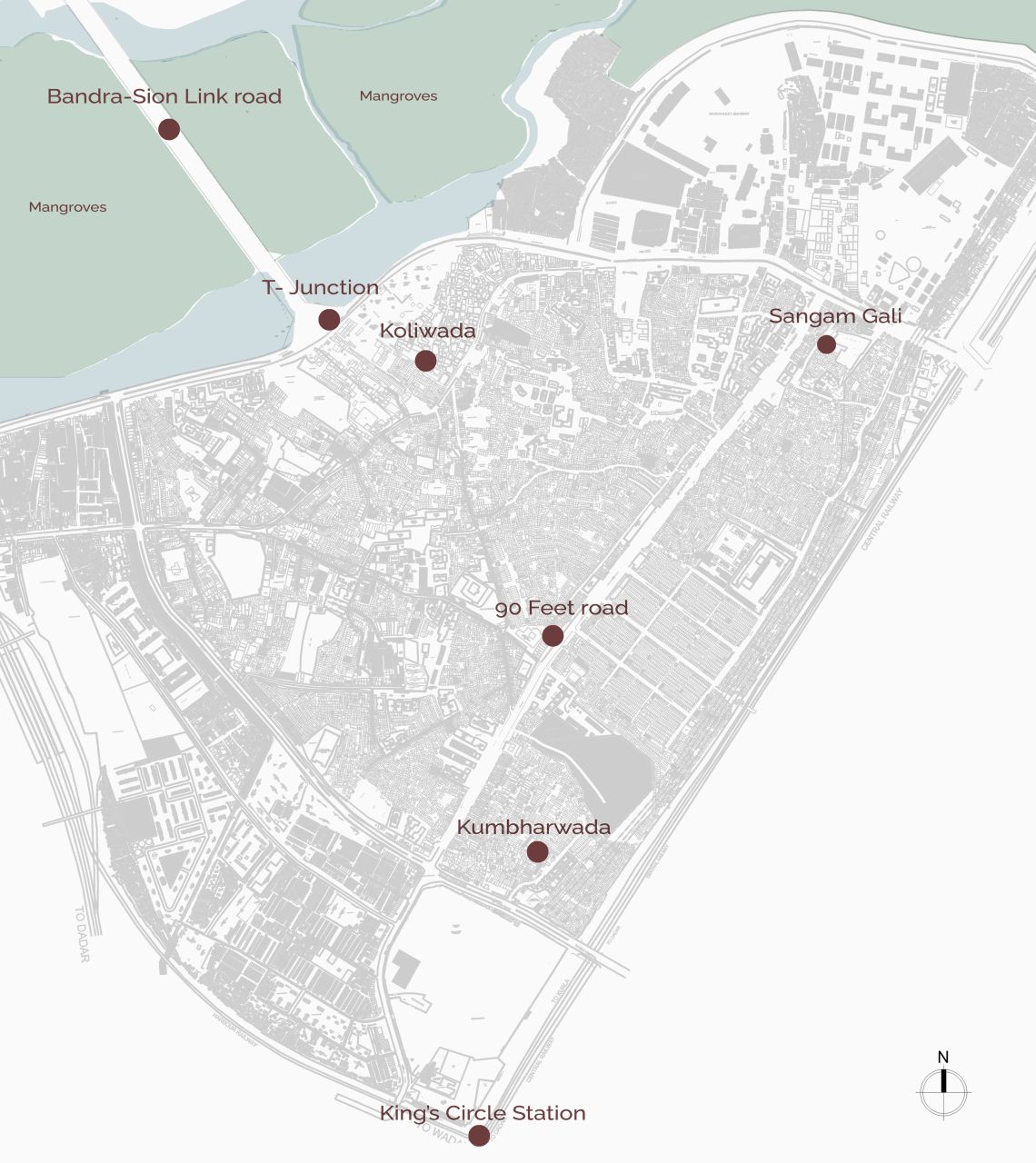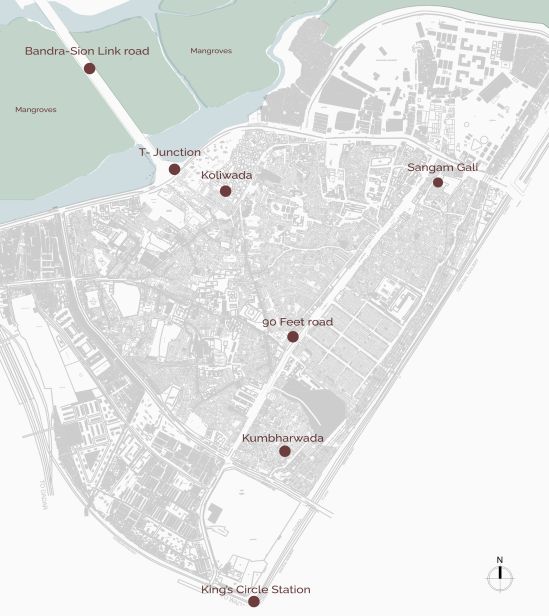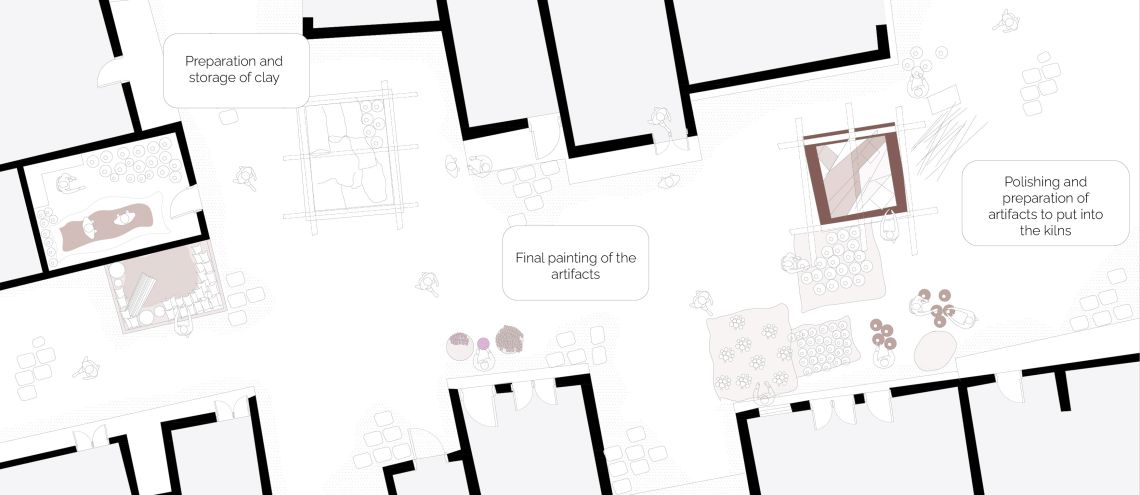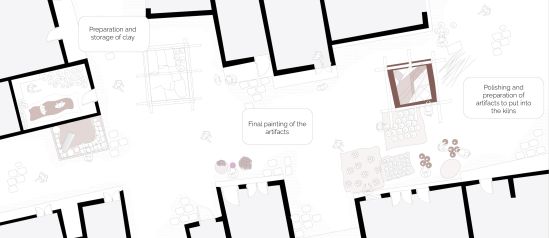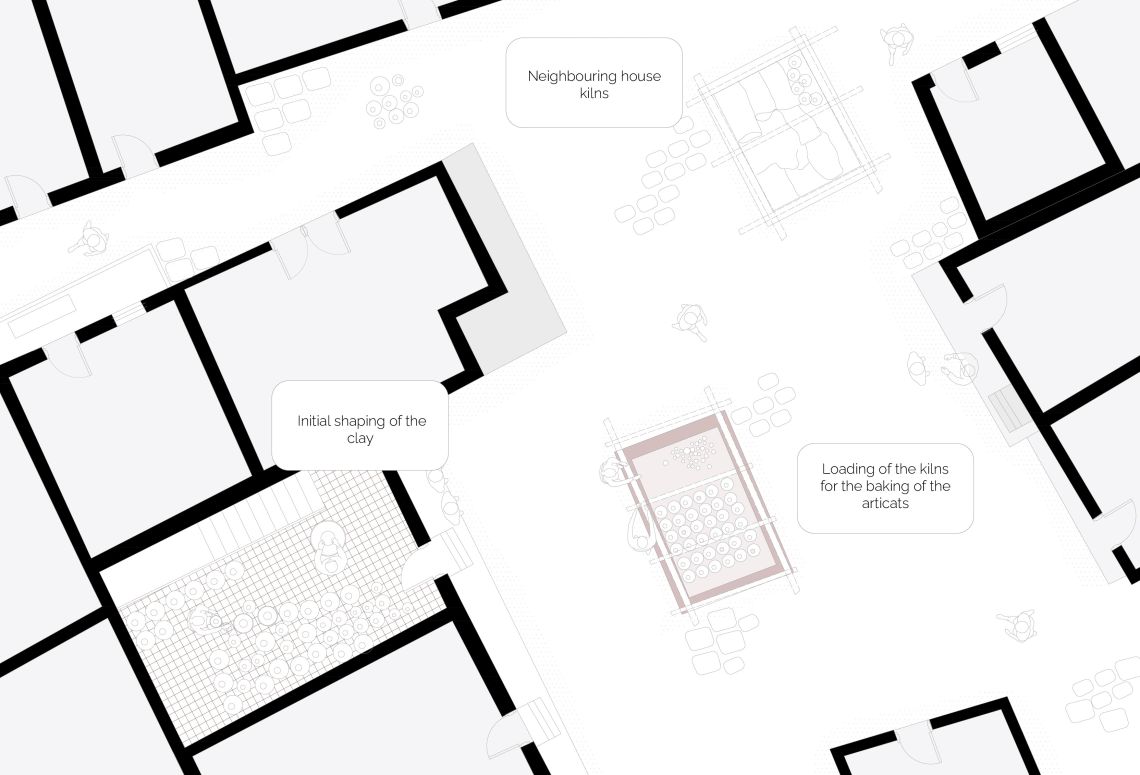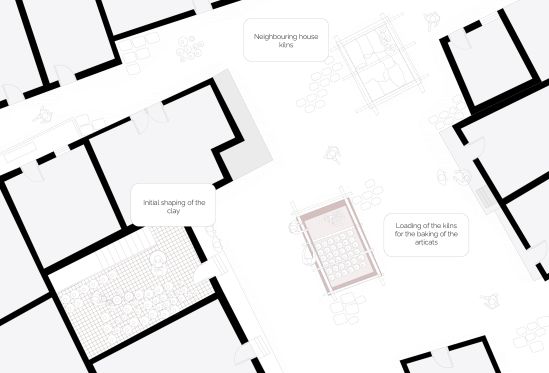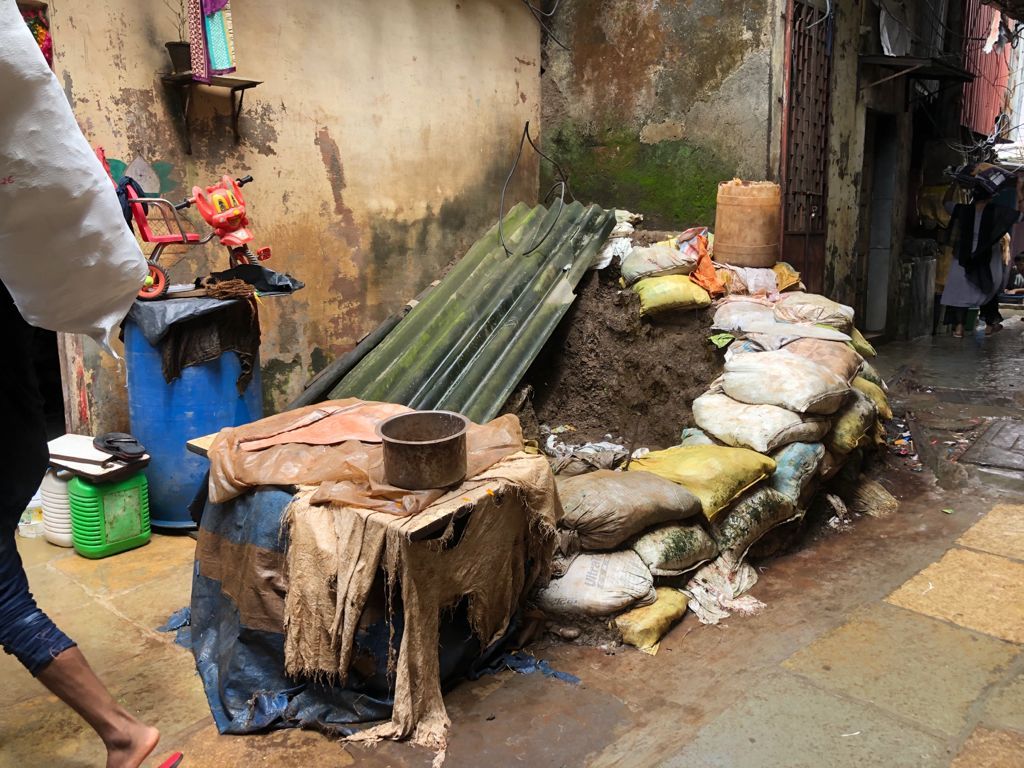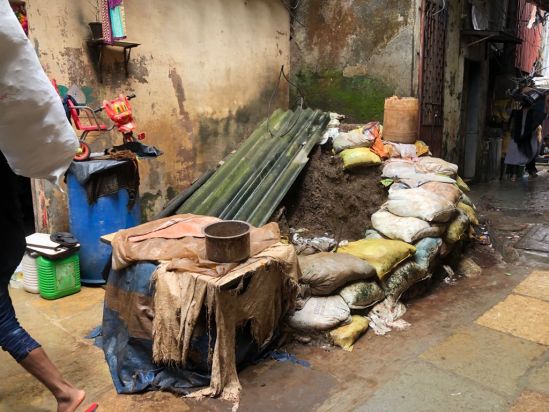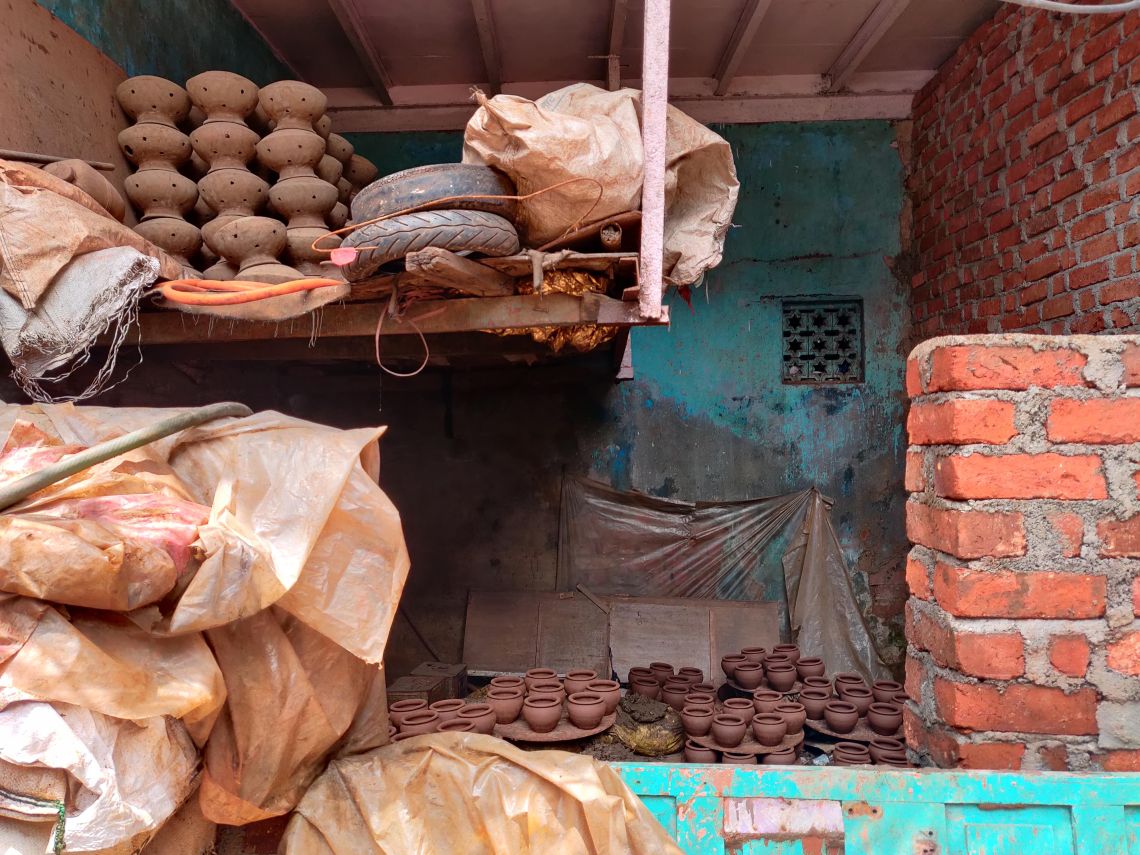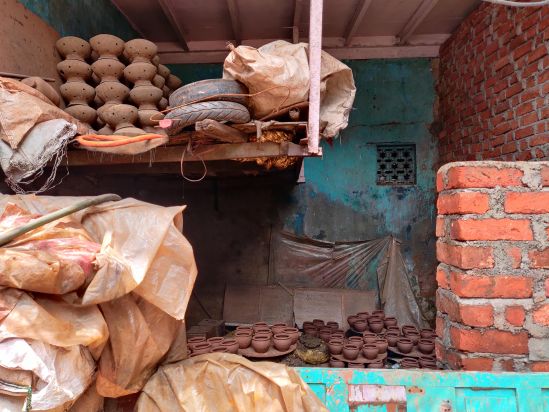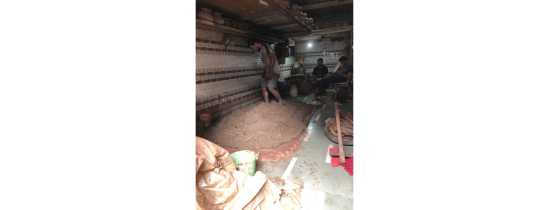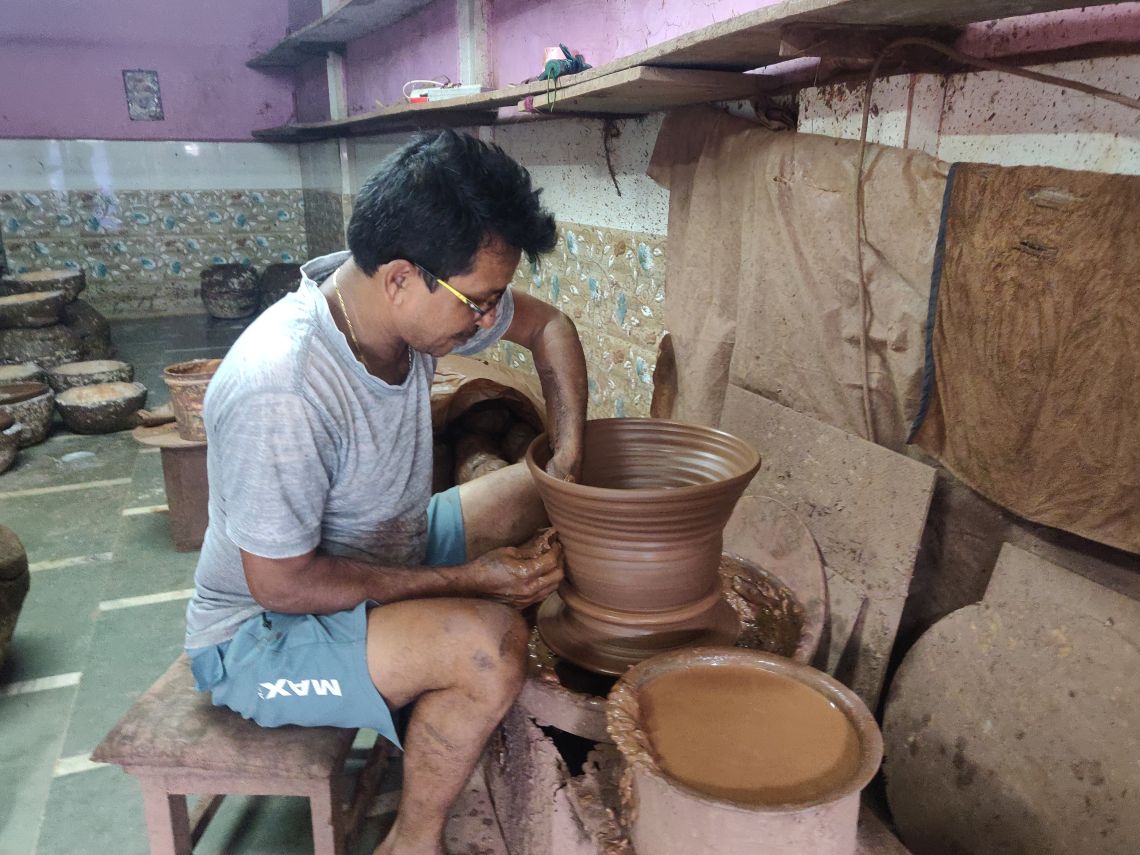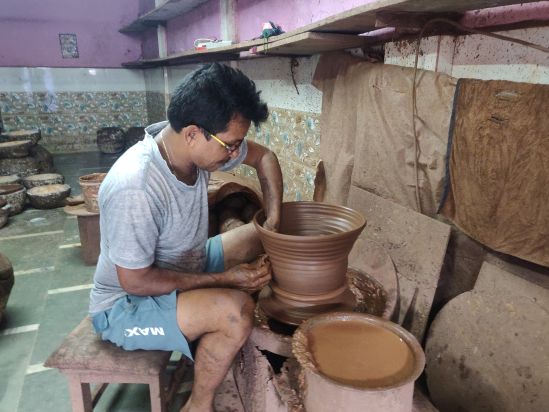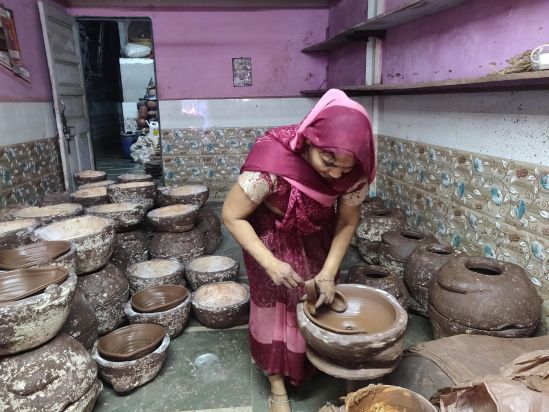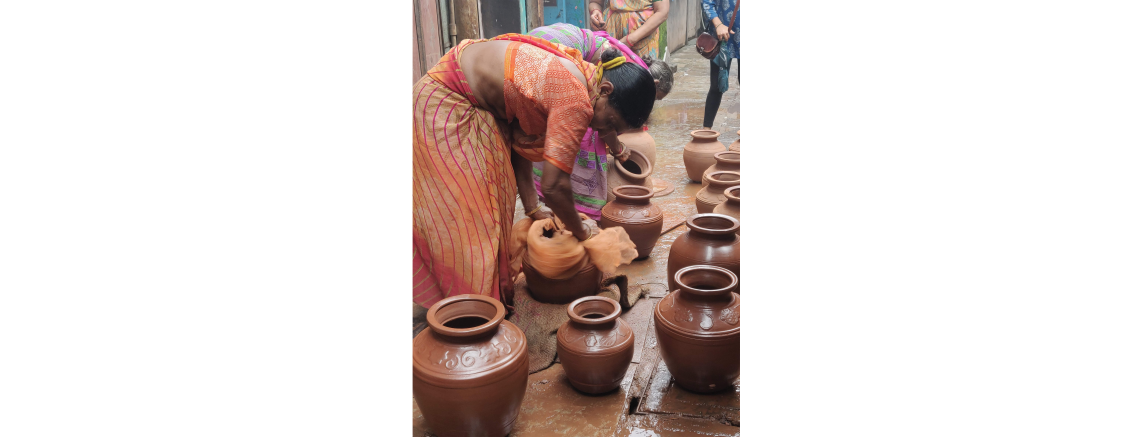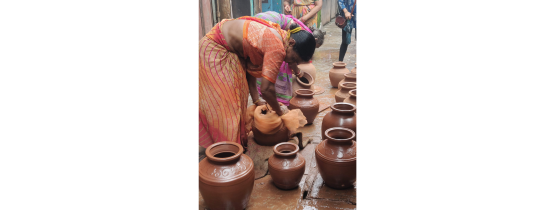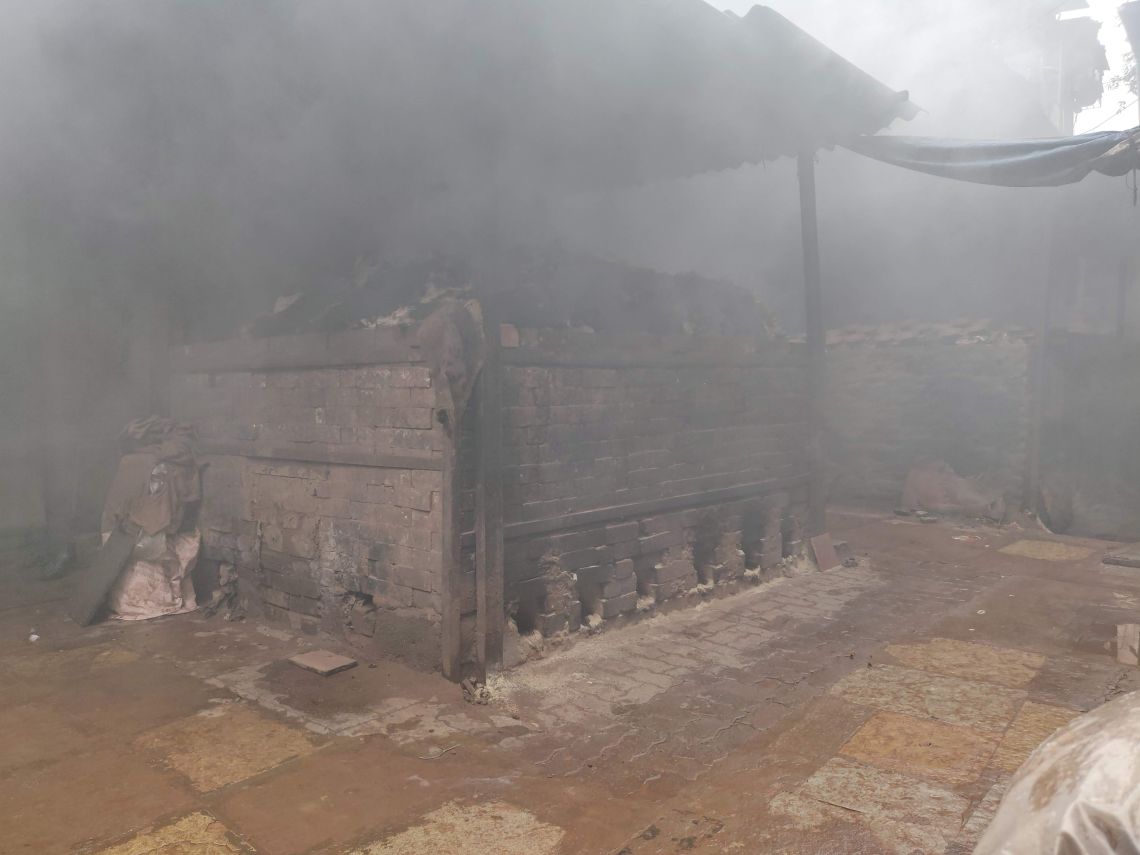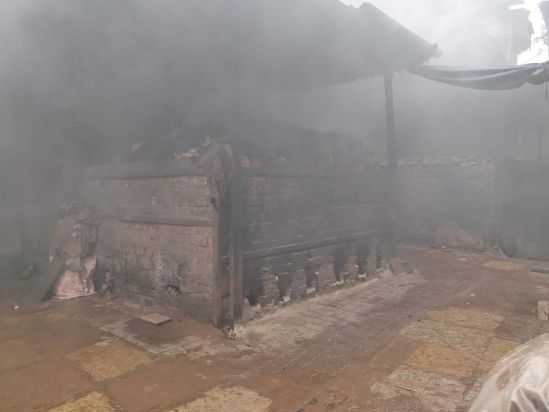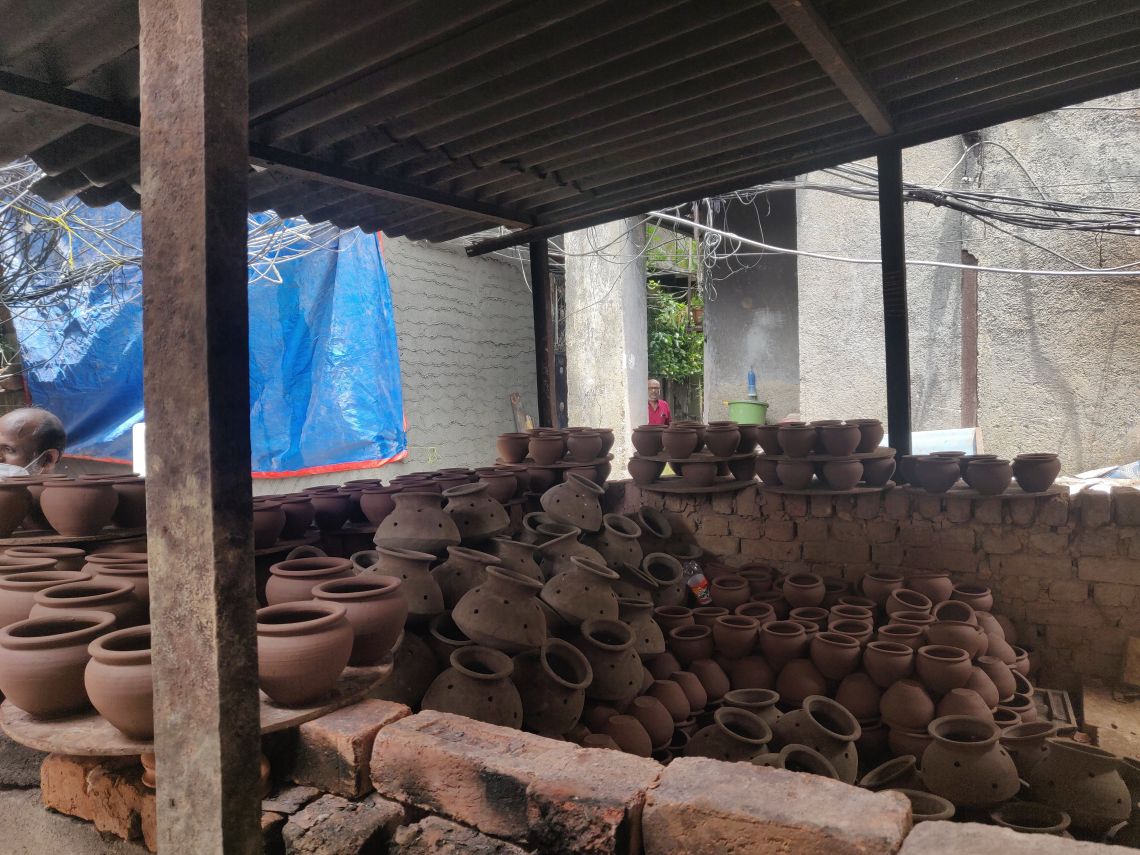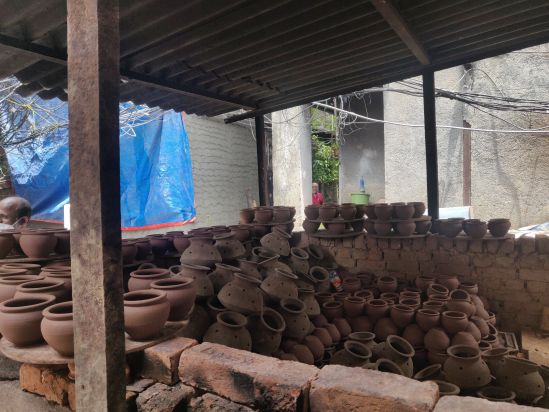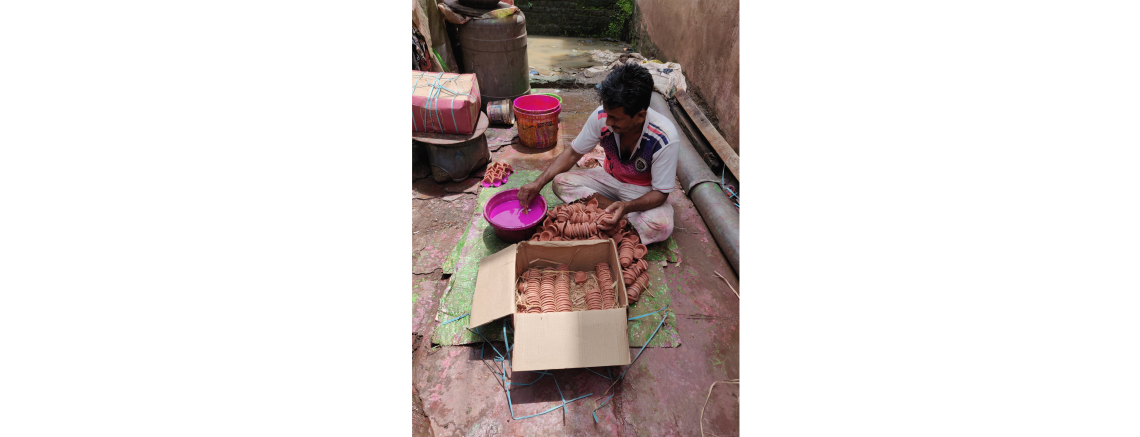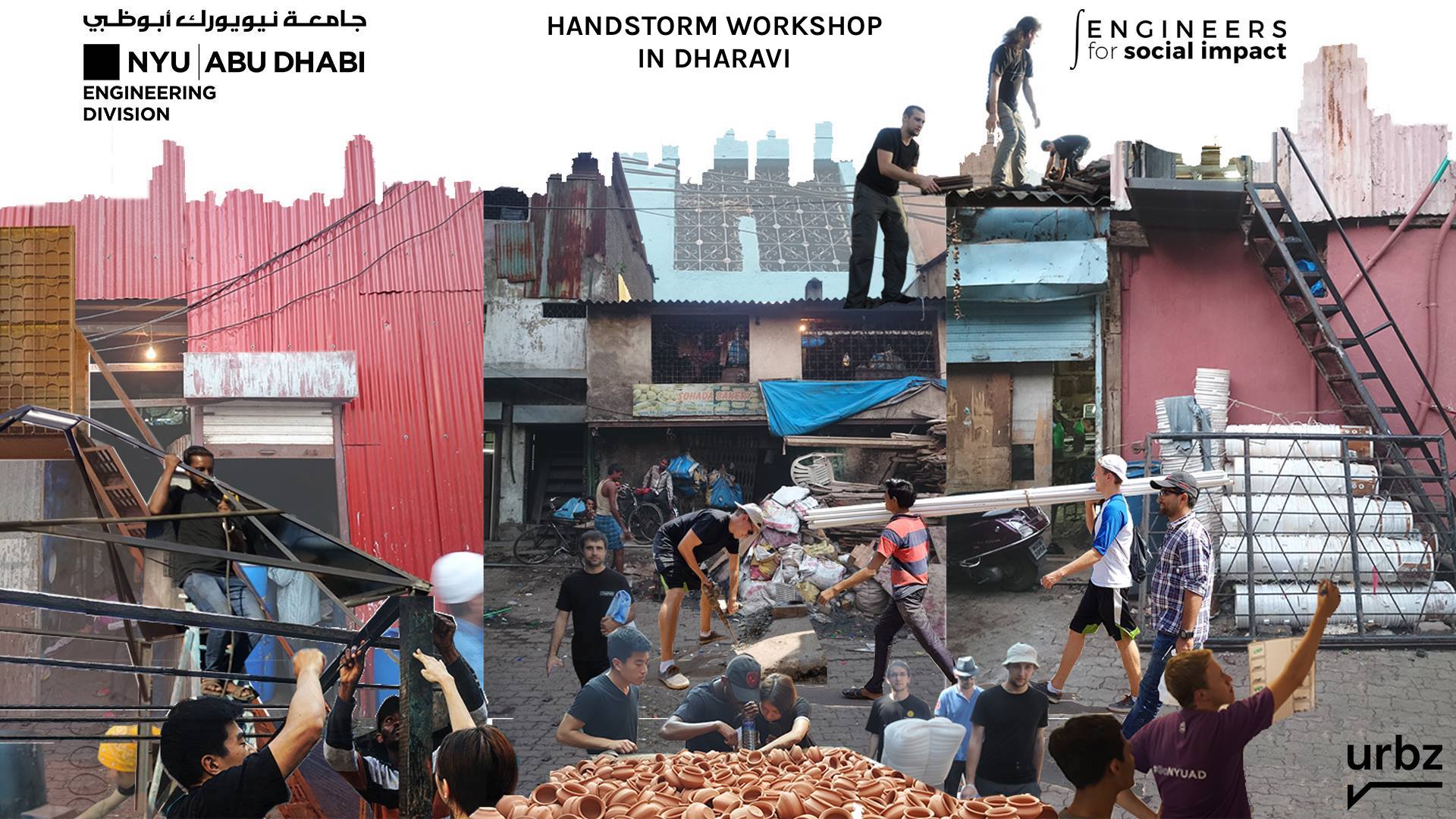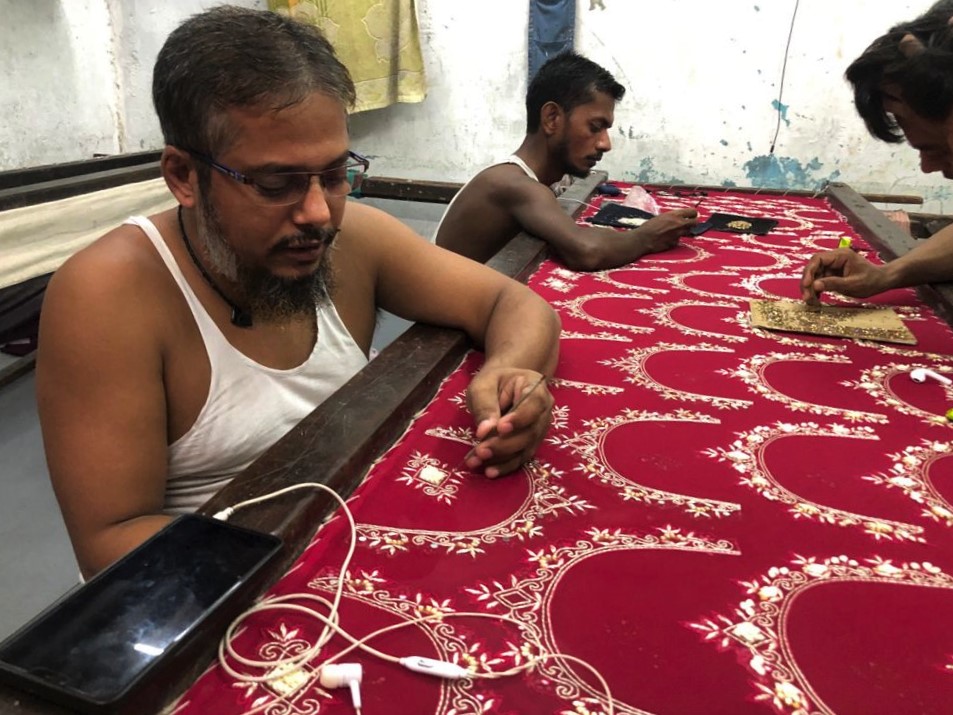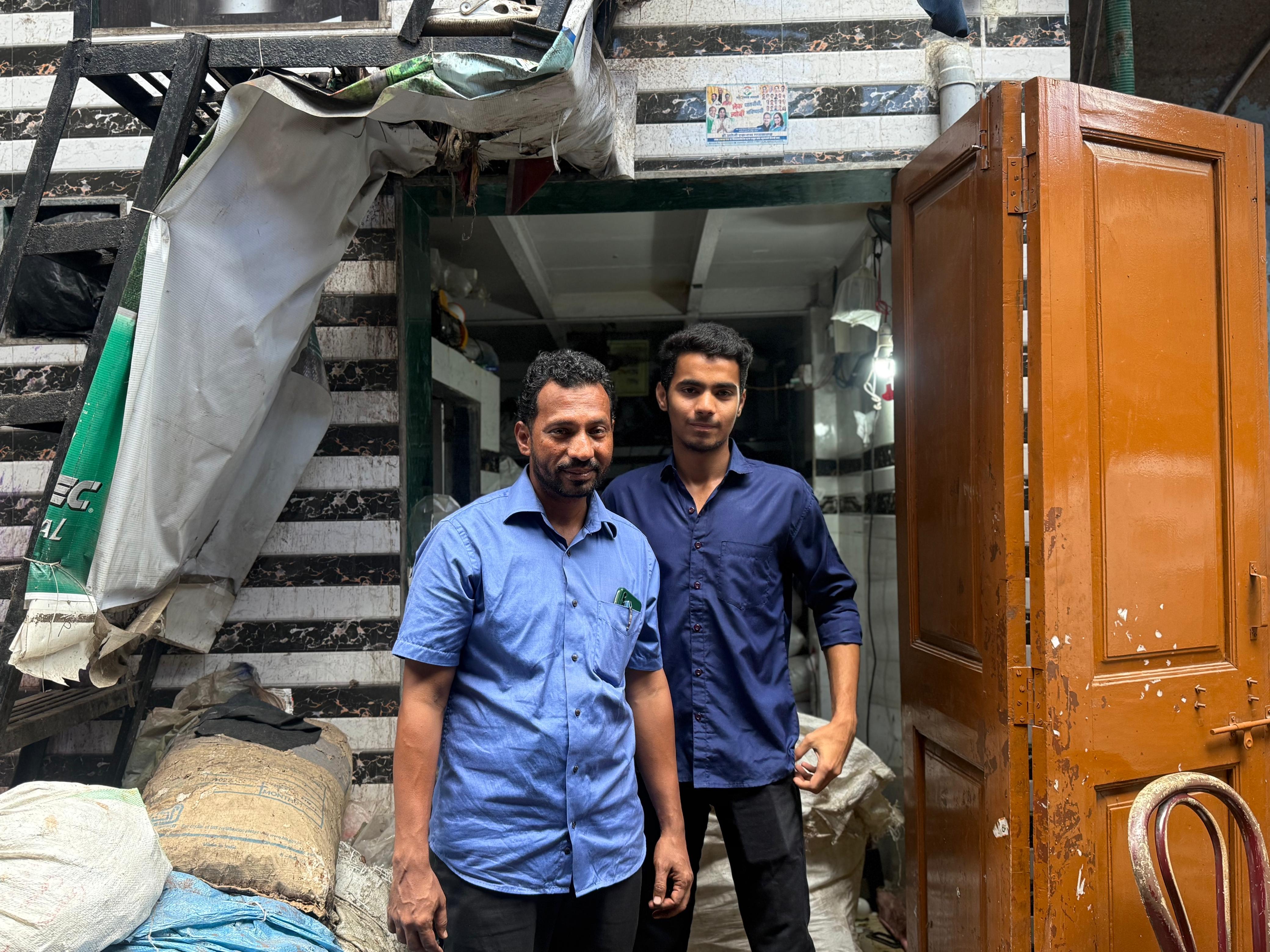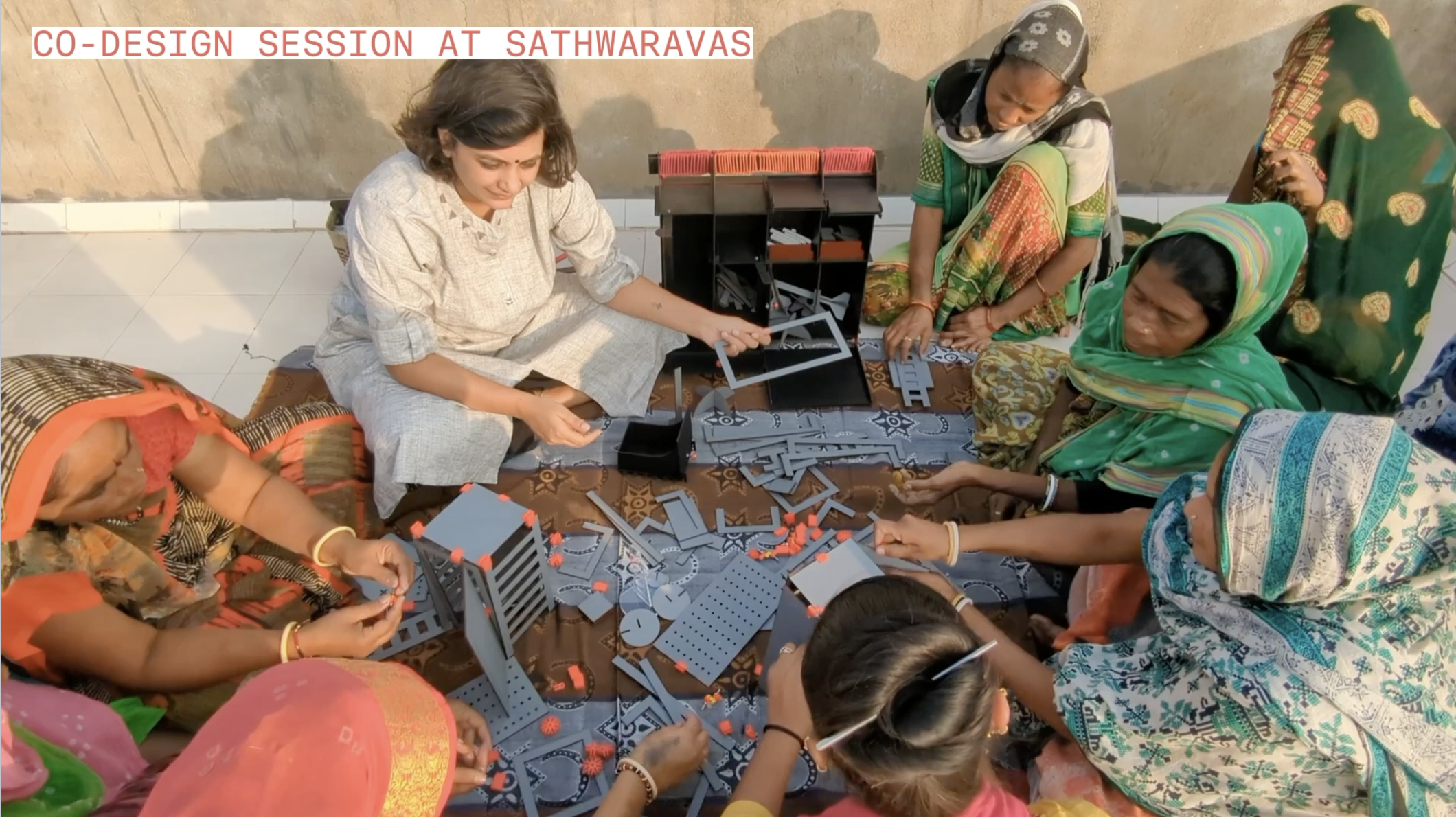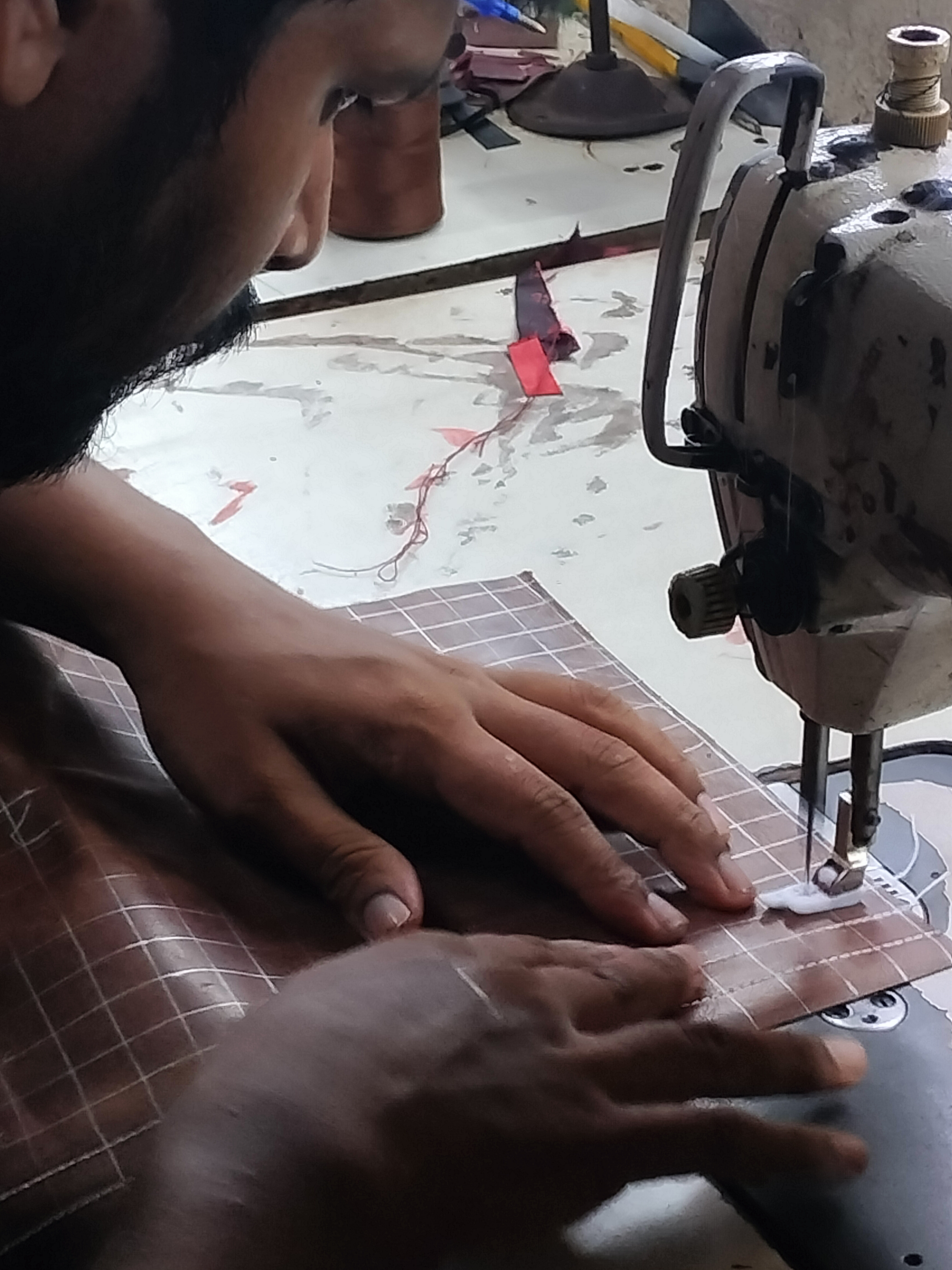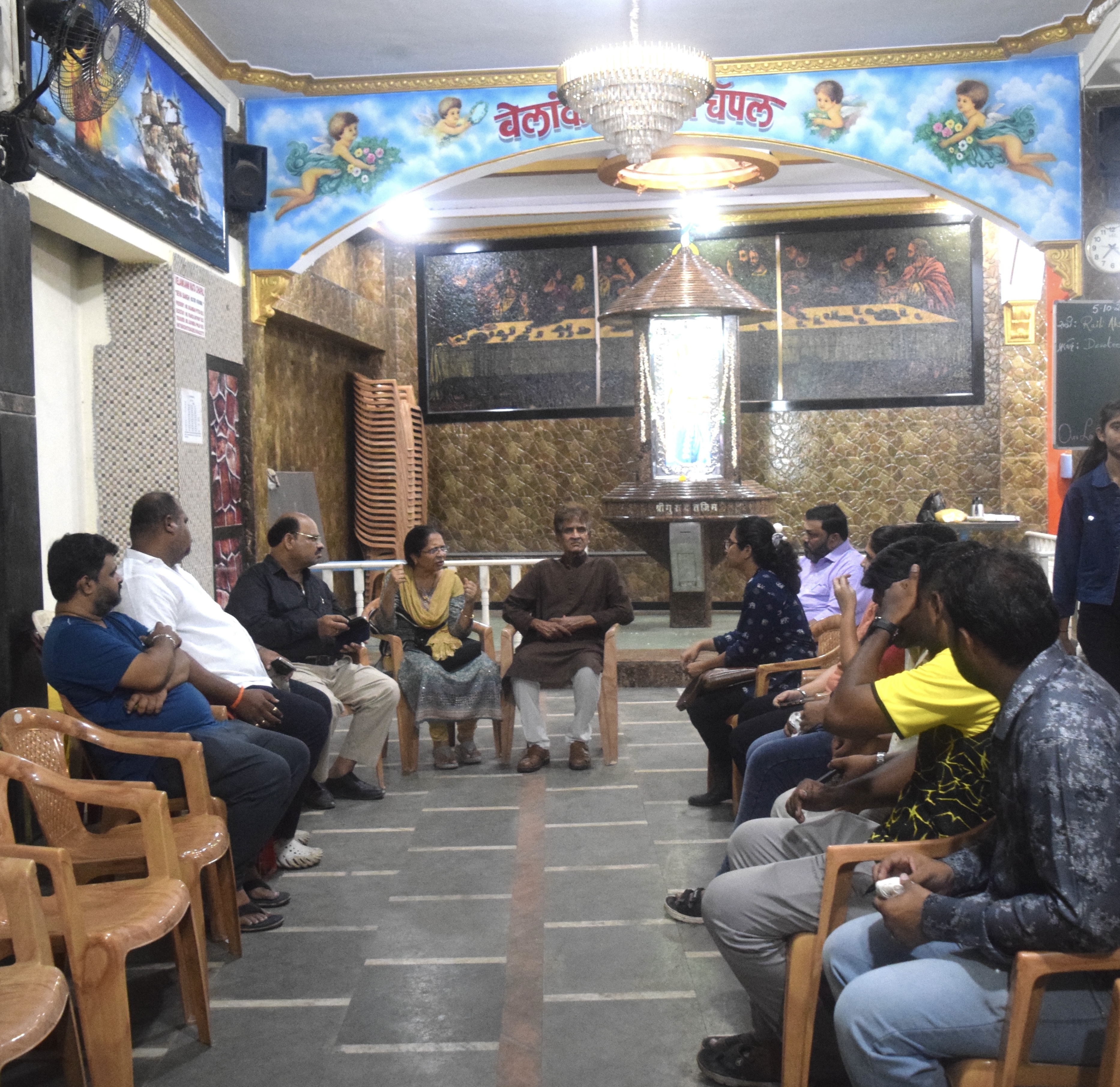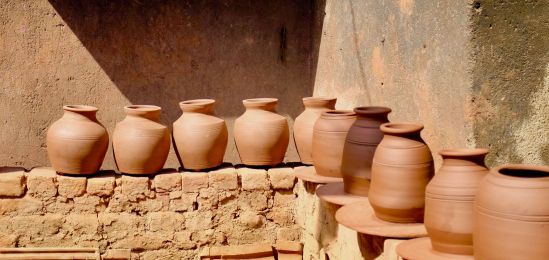A day's work at Kumbharwada
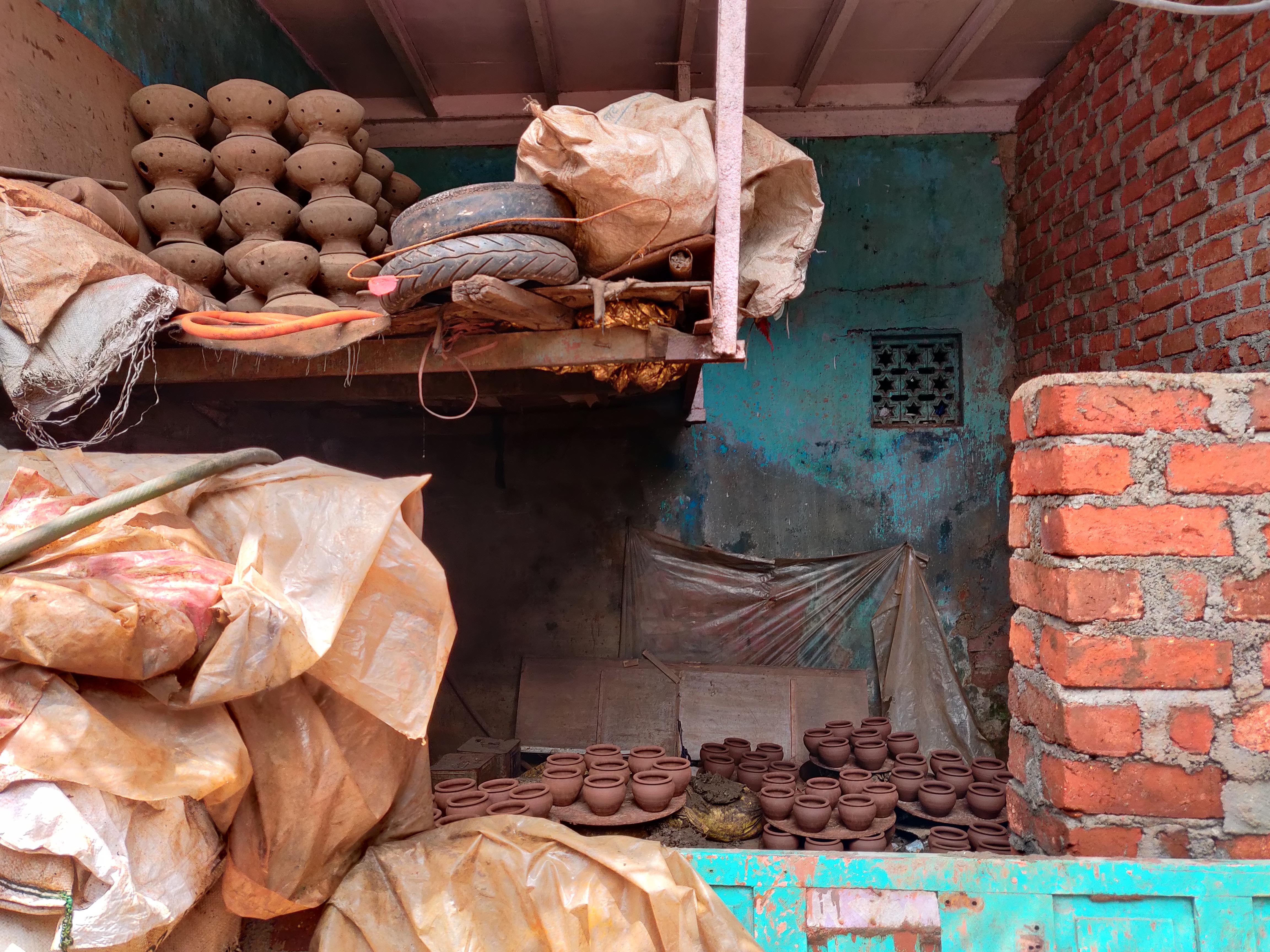
A day's work at Kumbharwada
Kumbharwada is a pottery village in Dharavi formed by migrant communities from Gujarat in the late 19th century. These migrant families brought to Mumbai their age-old traditions and skills and made pottery one of the most famous local crafts of Dharavi. To sustain their craft and tradition, families have worked together and created spaces that can facilitate their skills. The focus of this post is to understand the various stages involved in creating the pots and other products at Kumbharwada, and how each step in the process affects the usage and characteristics of the spaces around.
Spatial Organisation
Kumbharwada has five lanes also known as wadi’s, each wadi is lined up with multiple kilns which are surrounded by workshops and homes. One kiln is generally shared by 2 or 3 houses. And a few houses have smaller individual kilns. Most of these buildings around the kilns fall under the typology of a tool house - homes that double up as economic units. These multifunctional spaces, be it the house acting as a workshop, or the courtyard and streets becoming the places to dry artifacts, creates an ever-busy and bustling neighborhood with multiple stakeholders. But on the other hand, these multi-function spaces come with their own issues, the community has to also adapt to live with the smoke from the kilns that fill up the streets and enter their homes.
The Process
There is a specific process that the Kumbhar community follows while making the artefacts. It starts by bringing in raw material from Gujarat, Nashik, and the border of Mumbai. Bringing the material from Gujarat again connects the artisans to their roots. The material is powdered and filled into sacks which are then brought into Mumbai. These sacks are stored either in the corners of the workshops, on the lower level of their homes, or in the corner right outside their homes.
To start using this clay, water is added to the powder and the wet mixture is stomped on by 2-3 people at once, for a good amount of time, before it becomes suitable to be moulded. This process generally occurs indoors in a large room where the mixture can be spread onto a plastic sheet. In carrying out this process, a large portion of the workshop becomes unusable for a given period. Storage of the raw materials has to be done in suitable weather conditions. Protecting it from the rains, which are a very common occurrence in Mumbai is of utmost importance.
After the mixture reaches a suitable consistency for modelling initial shaping of the clay is done in the workshop. The workshop space is again an indoor space with a low stool and a wheel. Here the main potter sits and shapes the clay into the shape and size required for the given artefact. Once the favourable shape is achieved it is quickly taken off from the whole and put into different sized moulds.
The workshop is organised in a way where the clay from the wheel can be easily and quickly taken to the moulds, which are kept open right next to the wheel. In the mould, it is pressed against the corners, such that the layer is even and radially symmetric. The mould is then covered with a lid and laid out to dry.
The clay base sits in the mould for up to 15 days, until it is dry. Once it has dried, it is coated and polished, which is a quick process done by hand on the street right in front of the kilns. The narrow street usually comprises multiple people doing this task at one time, making the street a crowded space.
These artefacts are now placed along with many others in the kiln, either exclusive to the house the artefacts were made in, or in the kiln shared by a few of the neighbours. It stays for less than 36 hours in the kiln, until it is evenly baked, dried, and ready for sale. The kilns are brick boxes with an opening on top and suspended floors. When the artefacts are ready they are stacked in the kiln and then covered with a layer of cotton, which holds in the heat. Fabric scraps are stuffed into the space under the suspended floor and lit. These scraps are offcuts from the local textile industry. These multiple layers of scrap cloth of different materials and cotton together create these clouds of smoke that travel down all adjacent streets. The kilns are usually loaded in the evening and fired the next morning, before being unloaded in the afternoon. Some of the products get an additional layer of coating or paint on them as decorative additions. and then they are ready to be sold.
This process to produce the artefacts has been followed in Kumbharwada for several decades. The community is very tight-knit, and most of the tasks are done along with family, friends, and neighbours. By sharing resources and responsibilities, the pottery in Kumbharwada has been sustained for such a long time due to this very factor. Many generations have worked together and are still working to enhance this craft. However, the newer generations are being persuaded to take up different jobs. Not only is this process a smoky, exhausting, and time-consuming process, but the space is also getting lesser. More and more redevelopment projects are coming up, like the Slum Rehabilitation Authority (SRA) building that is already in place. The communities are moving into vertical buildings that no longer allow them to perform their craft.
